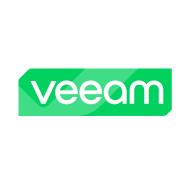

Opvizor and Veeam Data Platform are prominent in data management and protection. Veeam Data Platform often holds an advantage due to its comprehensive backup and recovery capabilities.
Features: Opvizor specializes in virtualization performance monitoring with predictive analytics, system health checks, and optimization for virtual environments. Veeam Data Platform offers powerful backup, replication, and disaster recovery solutions, supporting an array of applications and systems while ensuring robust data protection.
Ease of Deployment and Customer Service: Opvizor emphasizes ease with simple integration into virtual environments and provides responsive customer service with virtualization expertise. Veeam Data Platform, with its extensive features, presents a more complex deployment process but offers in-depth support and comprehensive assistance, catering to diverse user needs.
Pricing and ROI: Opvizor's competitive pricing appeals to businesses focusing on virtualization performance, offering a clear ROI through resource optimization. Veeam Data Platform, despite higher initial costs, offers expansive data protection, often leading to greater ROI in long-term data security.
| Product | Market Share (%) |
|---|---|
| Veeam Data Platform | 8.8% |
| Opvizor | 2.3% |
| Other | 88.9% |


| Company Size | Count |
|---|---|
| Small Business | 216 |
| Midsize Enterprise | 99 |
| Large Enterprise | 138 |
Veeam Data Platform is designed for modern data management, providing secure backups, intelligent data insights, and resilience. It ensures data is protected, recoverable, and manageable across complex environments, supporting business continuity effectively.
Veeam Data Platform stands out with its robust capabilities in data protection, orchestrated recovery, and efficient management. It offers a simple interface while ensuring data security and availability, which is critical for businesses. The platform's compatibility with virtual machines, databases, and applications across VMware, Hyper-V, and cloud environments makes it a versatile choice for backup and disaster recovery strategies. Users gain confidence from its performance, from secure backups to facilitating effective infrastructure monitoring.
What are the key features of Veeam Data Platform?Veeam Data Platform is widely implemented by industries needing robust disaster recovery plans and data management solutions. It is particularly valuable in environments utilizing hybrid cloud solutions, protecting mission-critical workloads, and ensuring business continuity. Businesses leverage its capabilities to safeguard data integrity and facilitate long-term retention through efficient infrastructure management.
We monitor all Virtualization Management Tools reviews to prevent fraudulent reviews and keep review quality high. We do not post reviews by company employees or direct competitors. We validate each review for authenticity via cross-reference with LinkedIn, and personal follow-up with the reviewer when necessary.